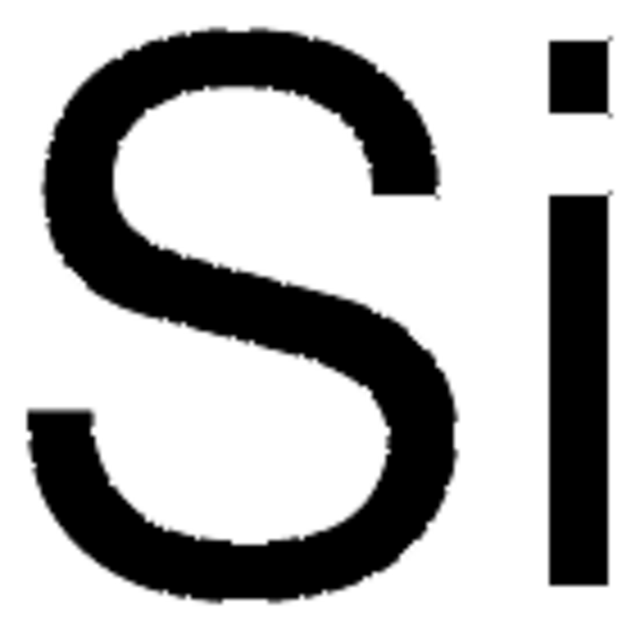637246
Silicon dioxide
nanopowder (spherical, porous), 5-20 nm particle size (TEM), 99.5% trace metals basis
Synonym(s):
Silica, Nanosilica, Silicon dioxide
About This Item
Recommended Products
Quality Level
Assay
99.5% trace metals basis
form
nanopowder (spherical, porous)
surface area
590-690 m2/g , TEM
particle size
5-20 nm (TEM)
bp
2230 °C (lit.)
mp
>1600 °C (lit.)
density
2.2-2.6 g/mL at 25 °C
bulk density
0.068 g/mL
SMILES string
O=[Si]=O
InChI
1S/O2Si/c1-3-2
InChI key
VYPSYNLAJGMNEJ-UHFFFAOYSA-N
Looking for similar products? Visit Product Comparison Guide
Related Categories
General description
Application
- Pickering emulsion polymerization using a silicon dioxide nanoparticle stabilizer to form molecularly imprinted polymers for steroid recognition.
- Mesoporous silica is used as a catalyst support in the preparation of multiwalled carbon nanotubes (MWCNTs).
- It is used as a ring opening of tetrahydrofuran-dimethanol to 1,2,6-hexanetriol.
- It maybe used to prepare silica/brominated poly(phenylene oxide) nanocomposites membranes for CO2 seperations.
- The composite scaffold of chitosan/chondroitin sulfate/nano-SiO2 was fabricated by lyophilization.
- Nanocomposites preparation of silica, single-wall carbon nanotubes, and graphite nanoplatelets in an epoxy matrix have been reported.6
- Dielectric spectroscopy study of the polystyrene/nanosilica model system has been studied.
- PMMA SiO2 nanocomposites were reported to be synthesized.
Storage Class Code
11 - Combustible Solids
WGK
nwg
Flash Point(F)
Not applicable
Flash Point(C)
Not applicable
Personal Protective Equipment
Regulatory Listings
Regulatory Listings are mainly provided for chemical products. Only limited information can be provided here for non-chemical products. No entry means none of the components are listed. It is the user’s obligation to ensure the safe and legal use of the product.
ISHL Indicated Name
Substances Subject to be Indicated Names
ISHL Notified Names
Substances Subject to be Notified Names
JAN Code
637246-250G:4548173944913
637246-VAR:
637246-500G:4548173944920
637246-BULK:
637246-50G:4548173944937
Choose from one of the most recent versions:
Already Own This Product?
Find documentation for the products that you have recently purchased in the Document Library.
Customers Also Viewed
Articles
Self-Assembled Nanodielectrics (SANDs) for Unconventional Electronics
Recent demand for electric and hybrid vehicles, coupled with a reduction in prices, has caused lithium-ion batteries (LIBs) to become an increasingly popular form of rechargeable battery technology.
Hydrogen is one of the most important resources in providing food, fuel, and chemical products for our everyday life. Sustainable catalytic hydrogen production from bioethanol has gained significant attention in recent years due to globally diminishing fossil fuel supplies, which have necessitated the search for new chemical feedstocks.
Silica is a very popular inorganic nanomaterial used in a wide range of applications including fillers for rubber, catalyst supports, separation media, carriers in food and agriculture, and abrasive/anticaking agents in cosmetics. It is also widely believed to be an important material for biomedical applications for following reasons.
Our team of scientists has experience in all areas of research including Life Science, Material Science, Chemical Synthesis, Chromatography, Analytical and many others.
Contact Technical Service





